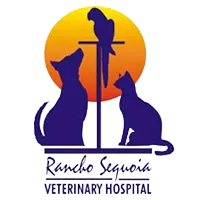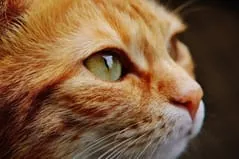Indoor Vs. Outdoor
Should you keep your cat strictly indoors or allow it to go outside? Several national associations of veterinarians advocate that domestic cats be kept inside for their health, safety, and the safety of surrounding native wildlife. Pet cats that are allowed to roam freely outdoors are subject to many dangers including, but not limited to:
• Cars • Motorcycles • Bicycles • Attacks from other animals • Possible human cruelty • Poisons, traps • Feline-specific diseases • Zoonotic diseases
Often cat owners that allow their cats to roam outdoors are surprised to find that their cat is continually crossing major streets and roaming far beyond their immediate neighborhood. Lastly, allowing cats to roam outdoors affects the surrounding native wildlife populations. While owned cats do not hunt animals for survival, they will kill and maim animals based on instinct. This predation can have a significant impact on rodent and bird species.
Creating an Enriched Indoor Environment
Without an investment in enriching the indoor environment, indoor cats can suffer boredom from predictability, stress, and obesity from inactivity. This is especially true if your cat was once an outdoor cat and you've transitioned him to an indoor-only pet. The best solution to prevent any of these issues is to give indoor cats what they need to thrive:
• Keep a litter tray in a private area. Be sure to clean regularly, removing eliminations daily, so cats will not be reluctant to use the box. Indoor cats will improperly eliminate or hold a bowel movement for days if they feel uncomfortable in their space. Avoid a potential health issue by keeping it clean. • While an indoor environment may be perceived as safer, be sure to carefully place potentially toxic house plants and lock cabinets with cleaning supplies. We know how curious cats can be- they'll try to get inside anything left slightly ajar. • Provide a scratching post or climbing wall, balls, feathers, or other play toys. Some cats like catnip, and this can be placed inside toys. Cats love to be up high, some people build walkways, close to the ceiling, around a room. Keep your feline busy, and you'll be their main companion. • Be sure to check crawl spaces, attics, washer and dryers, dishwashers and refrigerators before and after use. • Consider getting them a companion. At first, felines may be reluctant to welcome another cat, but over time most thrive due to the interaction.
For those cats who refuse to be a strictly indoor cat, there are things you can do to help protect them when outside. If you have a solid backyard fence, you can build an overhang at the top of the fence with piping and netting. The overhang should be about two feet long, and project inward at about a 45 degree angle, so the cat can not jump over the fence, and it also makes it harder for another cat to jump into your yard. If you do not have a solid back yard fence, you can build an enclosed patio space so the cats have access from the house.
Sources:
Ellis, SL; Rodan, I; Carney, HC; Rochiltz, I; Shearburn, LD; Sundahl, E; and Westropp, JL. “AAFP and ISFM Feline Environmental Needs Guidelines.” Journal of Feline Medical Surgery, March 2013.
American Humane Association, “Indoor Cats vs. Outdoor Cats.”
American Association of Feline Practitioners. “Confinement of Owned Indoor Cats Position Statement.” 2007.

Traveling With Your Pets
With the COVID-19 vaccine readily available to the public, society as a whole is ready to go outside again after being stuck in the house for over a year. Naturally this includes all pet owners as well. Here are a few tip for our pet owners as they get ready to go on their road trips, vacations, and everything in between this year. NOTE: PLEASE ADHERE TO ALL COVID-19 GUIDELINES AS YOU TRAVEL.
- Traveling by Airplane: Air travel is of most concern to pet owners. You can minimize the chances of an unpleasant experience by following a few guidelines. Federal regulations require that pets be at least 8 weeks old and weaned at least 5 days before flying. Generally, a health certificate (which is not more than 10 days old) must be available before pets will be permitted to fly. A valid rabies vaccination certificate will also be required. Contact the airline well in advance for specific regulations and to secure your pet's reservation. Try to book a nonstop, midweek flight and avoid plane changes if possible. During warm weather periods choose early morning or late evening flights. In colder months, choose midday flights. Arrive at the airport early, exercise your pet, personally place it in its crate, and pick up the animal promptly upon arrival. Do not take leashed animals on escalators.
- Transport crates, available from most airlines or pet shops, must:
- Be large enough to allow the animal to stand (without touching the top of the cage), turn around, and lie down.
- Be strong and free of interior protrusions, with handle or grips.
- Have a leakproof bottom that is covered with plenty of absorbent material.
- Be purchased in advance so the pet can become acclimated to the crate prior to travel.
- Be appropriately and clearly labeled. Include your name, home address, home phone number, and destination contact information, as well as a designation of "Live Animals," with arrows indicating the crate's upright position.
- Be ventilated on opposite sides, with exterior rims and knobs so that airflow is not impeded
- Ask your veterinarian for specific feeding instructions. For your pet's comfort, air travel on an almost empty stomach is usually recommended. The age and size of your pet, time and distance of the flight, and your pet's regular dietary routine will be considered when feeding recommendations are made.
- Transport crates, available from most airlines or pet shops, must:
- Traveling by Car: Pets should not be allowed to ride with their heads outside car windows. Particles of dirt can enter the eyes, ears, and nose, causing injury or infection.
- If your pet is not accustomed to car travel, take it for a few short rides before your trip. Cats should be confined to a cage or crate to allow them to feel secure and to avoid having a pet under your feet while driving. Stick to your regular feeding routine and give the main meal at the end of the day or when you reach your destination. Feeding dry food will be more convenient, assuming your pet readily consumes it. Dispose of unused canned food unless it can be refrigerated. Take along a plastic jug of cold water in case other reliable water sources are not available. Give small portions of food and water and plan to stop every two hours for exercise. Remember to include a leash with your pet's traveling supplies.
- If you must leave your pet in a parked car, be sure to lock all doors, park in a shady area, and open windows wide enough to provide ventilation without enabling your pet to jump out or get its head caught. Be aware of weather conditions. You should not leave your pet in a parked car when the temperature and/or humidity are high or when temperatures are near or below freezing.
- Traveling by Bus or Train: Most states prohibit animals from riding on buses and similar regulations restrict travel on trains. Exceptions are made for guide and service dogs accompanying blind and disabled persons. Consult your local carriers in advance for information.
Month-Long Celebrations
- National Pet Month
- National Service Eye Dog Examination Pig Month
- Chip Your Pet Month
Week-Long Celebrations
- May 2–8: Puppy Mill Action Week
- May 2–8: National Pet Week
Day Celebrations
- May 1: National Purebred Dog Day
- May 2: Mayday for Mutts
- May 3: National Special-Abled Pets Day
- May 5: Cinco De Mayo
- May 8: National Dog Mom Day
- May 8: Vet Nurse Day
- May 8: National Animal Disaster Preparedness Day
- May 9: Mother's Day Day
- May 14: International Chihuahua Appreciation Day
- May 20. National Rescue Dog Day
- May 30: International Hug Your Cat Day
- May 31: Memorial Day
May's Quote of the Month
“Pets are humanizing. They remind us we have an obligation and responsibility to preserve and nurture and care for all life.”
- James Cromwell, American Actor


